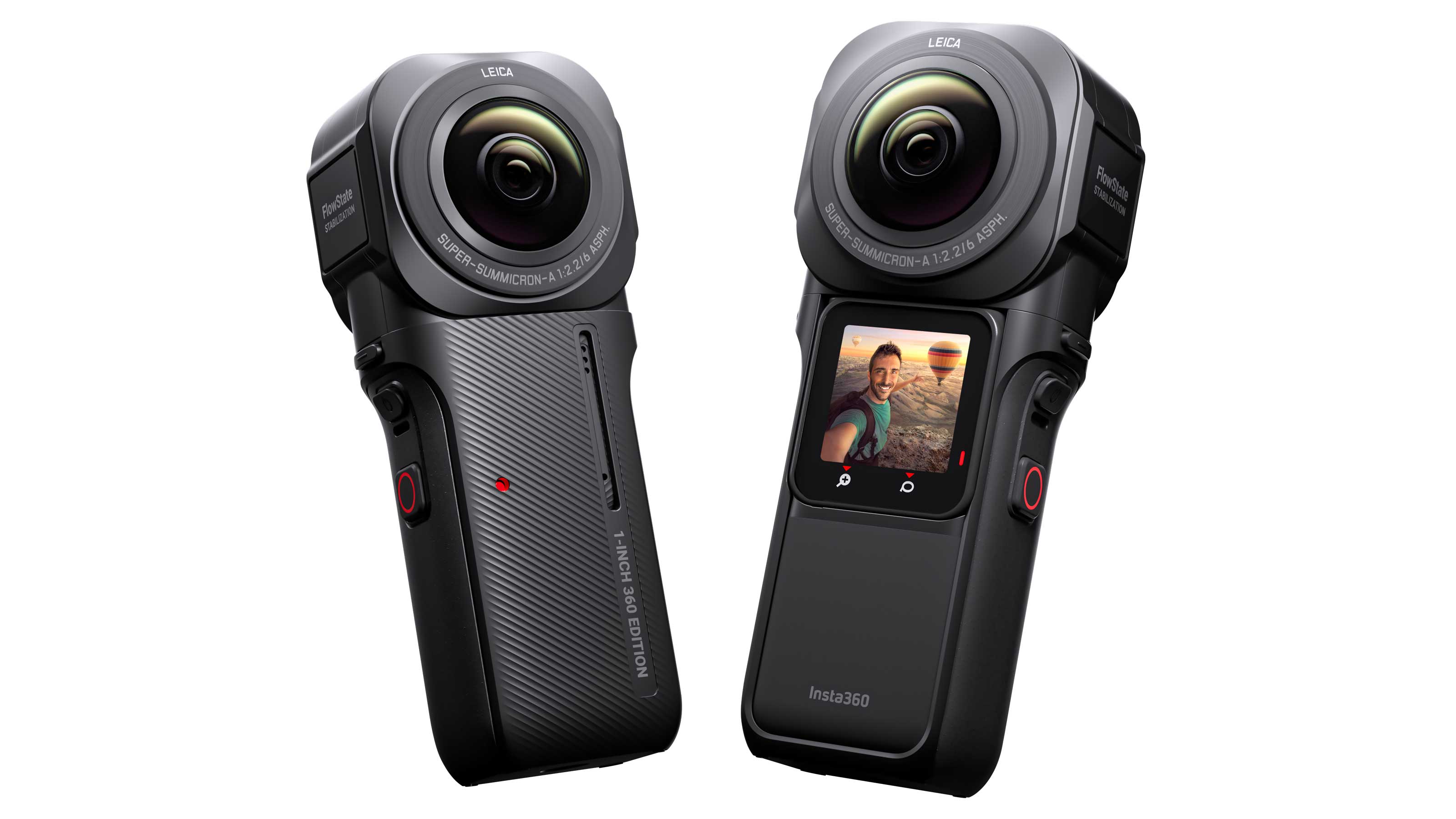New Insta360 ONE RS 1-inch 360 Edition shoots 6K 360 video and 21MP stills
The Insta360 ONE RS goes head to head with Ricoh Theta Z1 for image quality, dynamic range and low-light performance

Two key features of the Insta360 ONE RS 1-inch 360 edition set it apart. One its its dual 1-inch CMOS sensors, which are a big step up from the phone-sized sensors used in most 360 cameras. The other is its modular design, which gives it compatibility with Insta360’s existing ONE R system.
For clarity, this new camera is an extension of the modular RS range, but also a camera on its own. The existing box-shaped RS has an optional 1-inch Edition action camera module. This 1-inch 360 Edition is a logical next step, offering a spherical camera with larger 1-inch sensors, but clearly uses a different camera design to accommodate it properly.
The Insta360 ONE RS 1-inch 360 can be used handheld – the grip and vertical design are ideal for that – but it can also be mounted on its own ‘invisible’ selfie stick, a tripod or on a variety of different mounts for dynamic action footage.
• Read our hands on Insta360 ONE RS 1-inch 360 Edition review
It’s being aimed at a wide variety of content types, from professional filmmaking, to VR content, outdoor and travel video and business use. Insta360 says that with the new ONE RS and its 1-inch sensors, you “No longer have to choose between creativity and premium image quality.”
The company is referring to the inherently superior image quality of larger sensors, irrespective of megapixels, which deliver superior low light image quality, greater dynamic range and improved quality overall.
The Insta360 ONE RS and its 1-inch optics have been designed in collaboration with Leica as part of a strategic partnership which started in 2020, when Leica helped develop the 1-inch camera module for the Insta360 R system.
The best camera deals, reviews, product advice, and unmissable photography news, direct to your inbox!
Insta360 ONE RS 1-inch 360 key features
The larger 1-inch sensors in the ONE RS 1-inch 360 deliver all-round quality improvements, but the resolution gains are comparatively modest. The video resolution does now top out at 6K at 30fps, but remember this resolution is spread over the inside of a virtual sphere, so that if you crop your footage to get a regular ‘flat’ video, the resolution will be less.
The ONE RS 1-inch 360 can also shoot 21-megapixel spherical panoramas, which can also be cropped into regular ‘flat’ panoramic images. Both video and stills can also be explored in full 360 VR on an appropriate platform.
Insta360’s FlowState stabilization and 6-axis gimbals will keep your footage handheld and with horizon levelling, even during run and gun style handheld shooting. It comes with an ‘invisible’ selfie stick which is cloned out of the stitched footage. The ONE RS is also IPX3 water-resistant.
A PureShot HDR photo mode uses AI and exposure bracketing to increase dynamic range, while the Shot Lab in the mobile app also uses AI to automatic filming techniques like dolly zooms. For more detailed work, there’s an Insta360 Studio desktop application and also a Premiere Pro plug-in.
Insta360 ONE RS 1-inch 360 Edition price and availability
The Insta360 ONE RS 1-inch 360 Edition is available to buy now and will cost $799.99 (about £652/AU$1,154). It will also be available as an upgrade kit for the ONE R system including just the 1-inch 360 lens, battery and special mounting bracket (Core excluded) for $649.99 (about £530/AU$938).
Read more:
• Best 360 cameras
• Best action cameras
• Best cameras for video

Rod is an independent photography journalist and editor, and a long-standing Digital Camera World contributor, having previously worked as DCW's Group Reviews editor. Before that he has been technique editor on N-Photo, Head of Testing for the photography division and Camera Channel editor on TechRadar, as well as contributing to many other publications. He has been writing about photography technique, photo editing and digital cameras since they first appeared, and before that began his career writing about film photography. He has used and reviewed practically every interchangeable lens camera launched in the past 20 years, from entry-level DSLRs to medium format cameras, together with lenses, tripods, gimbals, light meters, camera bags and more. Rod has his own camera gear blog at fotovolo.com but also writes about photo-editing applications and techniques at lifeafterphotoshop.com



